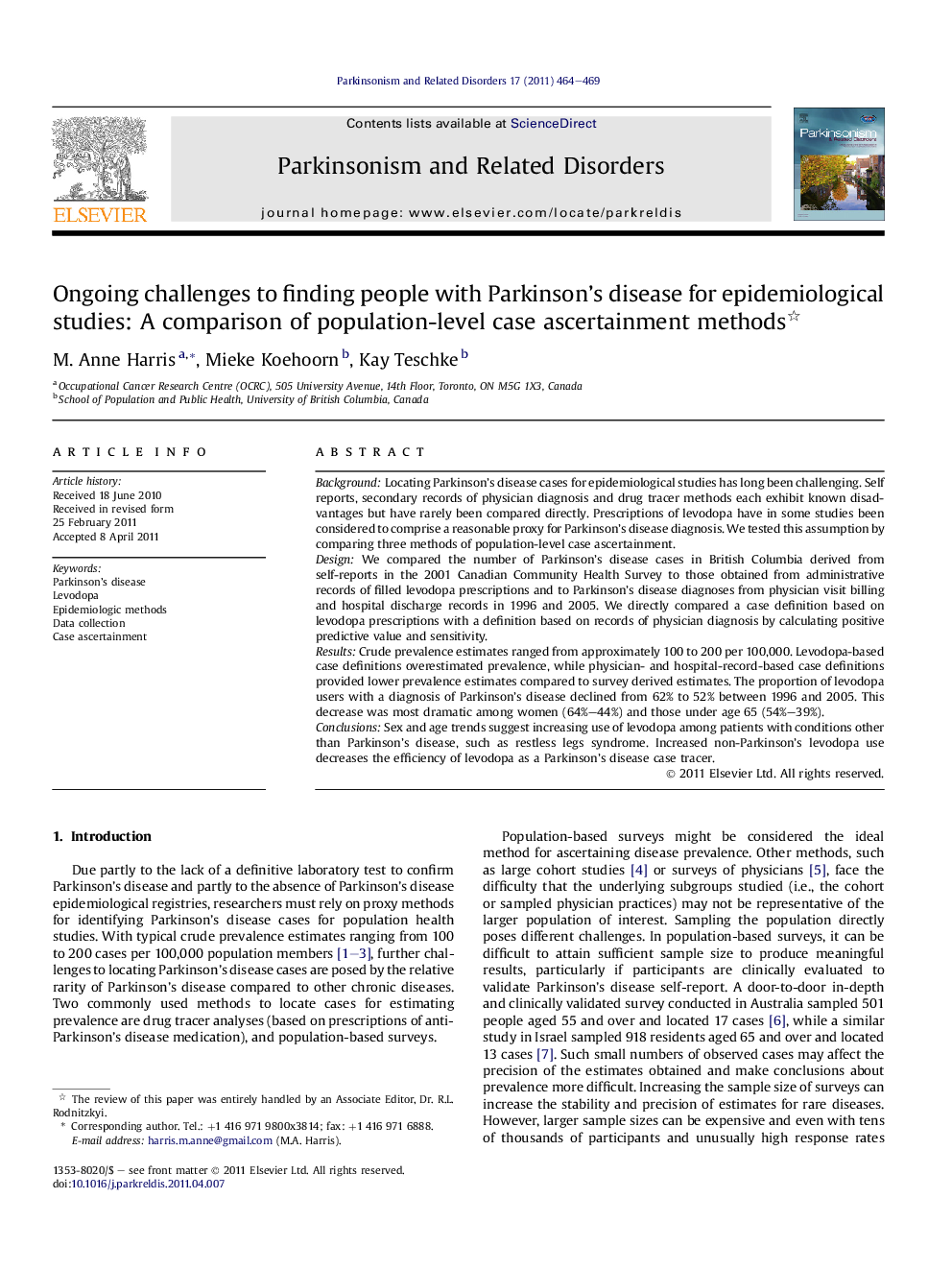| Article ID | Journal | Published Year | Pages | File Type |
|---|---|---|---|---|
| 1920969 | Parkinsonism & Related Disorders | 2011 | 6 Pages |
BackgroundLocating Parkinson’s disease cases for epidemiological studies has long been challenging. Self reports, secondary records of physician diagnosis and drug tracer methods each exhibit known disadvantages but have rarely been compared directly. Prescriptions of levodopa have in some studies been considered to comprise a reasonable proxy for Parkinson’s disease diagnosis. We tested this assumption by comparing three methods of population-level case ascertainment.DesignWe compared the number of Parkinson’s disease cases in British Columbia derived from self-reports in the 2001 Canadian Community Health Survey to those obtained from administrative records of filled levodopa prescriptions and to Parkinson’s disease diagnoses from physician visit billing and hospital discharge records in 1996 and 2005. We directly compared a case definition based on levodopa prescriptions with a definition based on records of physician diagnosis by calculating positive predictive value and sensitivity.ResultsCrude prevalence estimates ranged from approximately 100 to 200 per 100,000. Levodopa-based case definitions overestimated prevalence, while physician- and hospital-record-based case definitions provided lower prevalence estimates compared to survey derived estimates. The proportion of levodopa users with a diagnosis of Parkinson’s disease declined from 62% to 52% between 1996 and 2005. This decrease was most dramatic among women (64%–44%) and those under age 65 (54%–39%).ConclusionsSex and age trends suggest increasing use of levodopa among patients with conditions other than Parkinson’s disease, such as restless legs syndrome. Increased non-Parkinson’s levodopa use decreases the efficiency of levodopa as a Parkinson’s disease case tracer.
